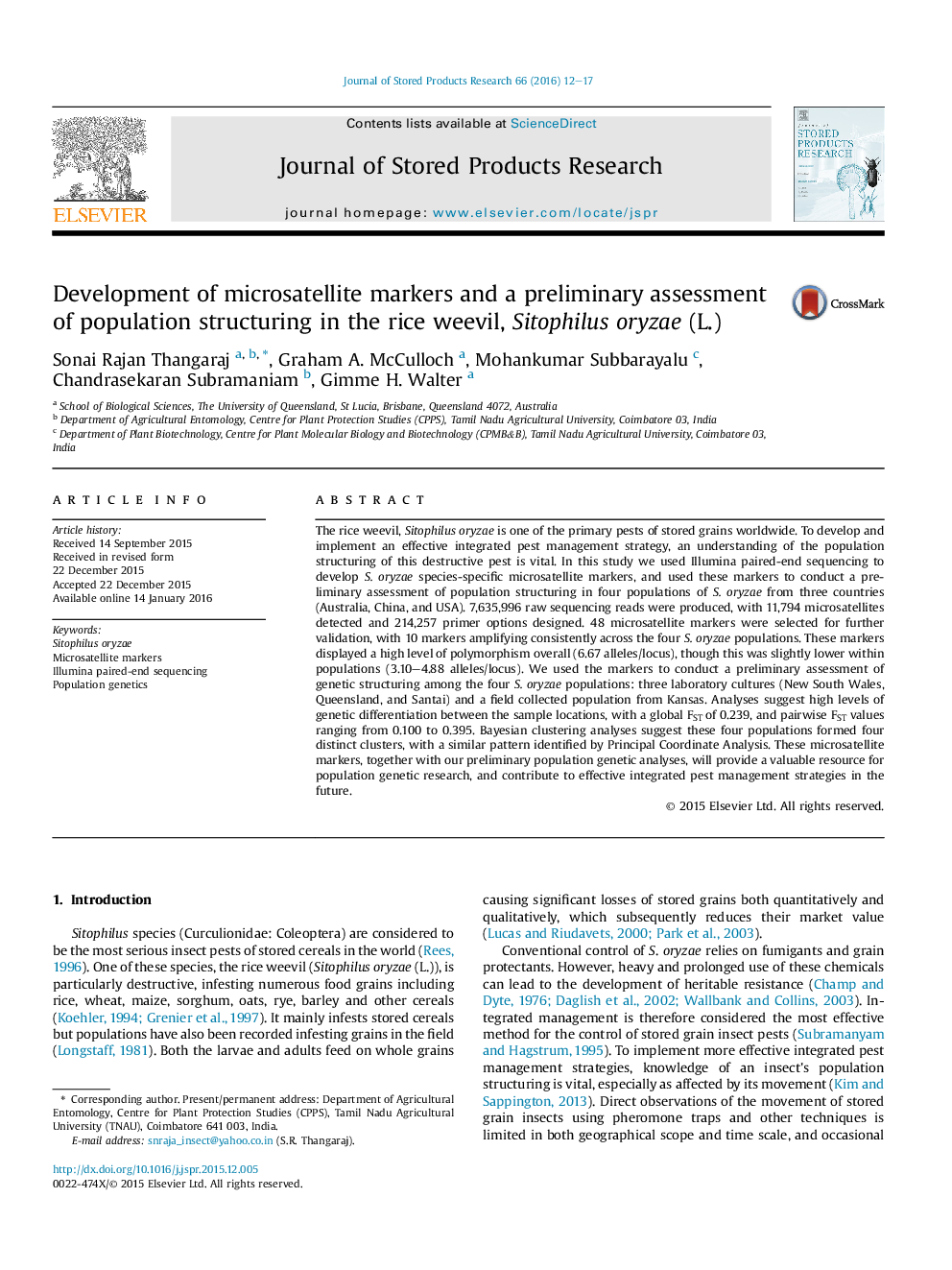| Article ID | Journal | Published Year | Pages | File Type |
|---|---|---|---|---|
| 4516986 | Journal of Stored Products Research | 2016 | 6 Pages |
•11,794 Sitophilus oryzae microsatellites were identified using Illumina paired-end sequencing.•10 markers consistently amplified across four populations from three countries.•Markers displayed high levels of allelic richness and heterozygosity.•Preliminary results suggests strong global genetic structuring within S. oryzae.
The rice weevil, Sitophilus oryzae is one of the primary pests of stored grains worldwide. To develop and implement an effective integrated pest management strategy, an understanding of the population structuring of this destructive pest is vital. In this study we used Illumina paired-end sequencing to develop S. oryzae species-specific microsatellite markers, and used these markers to conduct a preliminary assessment of population structuring in four populations of S. oryzae from three countries (Australia, China, and USA). 7,635,996 raw sequencing reads were produced, with 11,794 microsatellites detected and 214,257 primer options designed. 48 microsatellite markers were selected for further validation, with 10 markers amplifying consistently across the four S. oryzae populations. These markers displayed a high level of polymorphism overall (6.67 alleles/locus), though this was slightly lower within populations (3.10–4.88 alleles/locus). We used the markers to conduct a preliminary assessment of genetic structuring among the four S. oryzae populations: three laboratory cultures (New South Wales, Queensland, and Santai) and a field collected population from Kansas. Analyses suggest high levels of genetic differentiation between the sample locations, with a global FST of 0.239, and pairwise FST values ranging from 0.100 to 0.395. Bayesian clustering analyses suggest these four populations formed four distinct clusters, with a similar pattern identified by Principal Coordinate Analysis. These microsatellite markers, together with our preliminary population genetic analyses, will provide a valuable resource for population genetic research, and contribute to effective integrated pest management strategies in the future.
